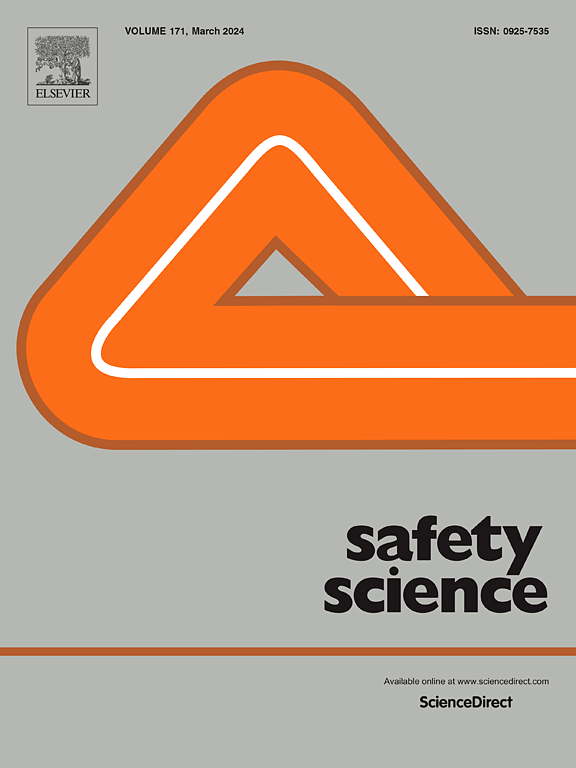Barriers, facilitators and acceptability of health promotion initiatives and behaviours in contact centre workers: A systematic review
IF 5.4
1区 工程技术
Q1 ENGINEERING, INDUSTRIAL
引用次数: 0
Abstract
Contact centre work is characterised by prolonged sitting, musculoskeletal disorders and poor mental health. Therefore, health promotion initiatives in contact centre workplaces are vital, yet implementation is challenging because of factors such as high workloads and limited participation opportunities. Through a systematic review, we provide an up-to-date overview of the specific target behaviours, barriers, facilitators and worker acceptability surrounding health promotion in contact centres. Barriers and facilitators were categorised using an ecological model (e.g., individual, psychosocial, physical, organisational levels). We searched seven academic databases (including PubMed) and Google between August 2023 and October 2024. Twenty-one intervention, 33 observational and 24 grey literature reports met inclusion criteria. Risk of bias was assessed by checklists from the Critical Appraisal Skills Program and JBI, and the Risk of Bias and ROBINS-I tools. Information on target behaviours, barriers, facilitators, and intervention acceptability were extracted. Target behaviours for health promotion initiatives comprised sitting, physical activity, diet, smoking and stress. Barriers and facilitators occurred at multiple, intersecting levels. The main barriers to health promotion were psychosocial work characteristics (high workloads, monitoring, low job control, shift work), unhealthy organisational cultures and low worker motivation. Facilitators included colleague and manager support, offline time to participate in the interventions, and physical support from sit-stand desks. Individual sit-stand desks, education sessions, wellbeing breaks, and group-based programs were acceptable. Qualitative studies were primarily low risk, other study designs were moderate or high risk. Health promotion programs for contact centre workers should be tailored to improve work characteristics and culture.
联络中心工作人员健康促进举措和行为的障碍、促进因素和可接受性:系统审查
联络中心的工作特点是长时间坐着,肌肉骨骼失调,精神健康状况不佳。因此,联络中心工作场所的健康促进举措至关重要,但由于工作量大和参与机会有限等因素,实施起来具有挑战性。通过系统审查,我们提供了联络中心健康促进的具体目标行为、障碍、促进因素和工作人员可接受性的最新概述。使用生态模型对障碍和促进因素进行分类(例如,个人、社会心理、身体、组织层面)。我们在2023年8月至2024年10月期间检索了7个学术数据库(包括PubMed)和谷歌。21份干预报告、33份观察报告和24份灰色文献报告符合纳入标准。偏倚风险通过关键评估技能计划和JBI的检查表以及偏倚风险和ROBINS-I工具进行评估。提取有关目标行为、障碍、促进因素和干预可接受性的信息。促进健康举措的目标行为包括久坐、体育活动、饮食、吸烟和压力。障碍和促进因素出现在多个交叉的层面。促进健康的主要障碍是心理社会工作特点(高工作量、监督、低工作控制、轮班工作)、不健康的组织文化和工人积极性低。辅助因素包括同事和经理的支持,参与干预的离线时间,以及坐立两用办公桌的物理支持。个人坐立两用办公桌、教育课程、健康休息时间和团体项目都是可以接受的。定性研究主要为低风险,其他研究设计为中度或高风险。联络中心工作人员的健康促进计划应量身定制,以改善工作特点和文化。
本文章由计算机程序翻译,如有差异,请以英文原文为准。
求助全文
约1分钟内获得全文
求助全文
来源期刊

Safety Science
管理科学-工程:工业
CiteScore
13.00
自引率
9.80%
发文量
335
审稿时长
53 days
期刊介绍:
Safety Science is multidisciplinary. Its contributors and its audience range from social scientists to engineers. The journal covers the physics and engineering of safety; its social, policy and organizational aspects; the assessment, management and communication of risks; the effectiveness of control and management techniques for safety; standardization, legislation, inspection, insurance, costing aspects, human behavior and safety and the like. Papers addressing the interfaces between technology, people and organizations are especially welcome.
 求助内容:
求助内容: 应助结果提醒方式:
应助结果提醒方式:


